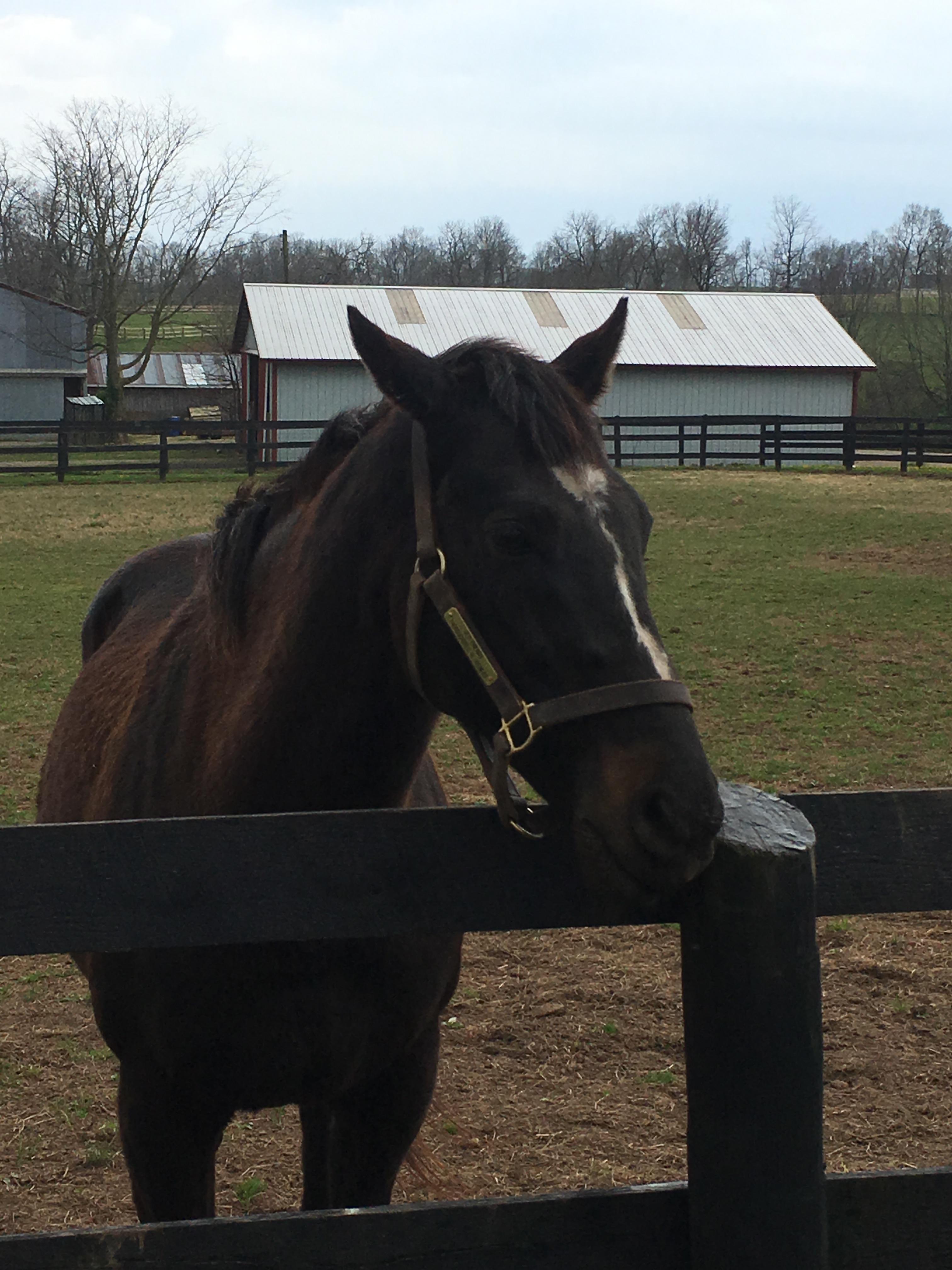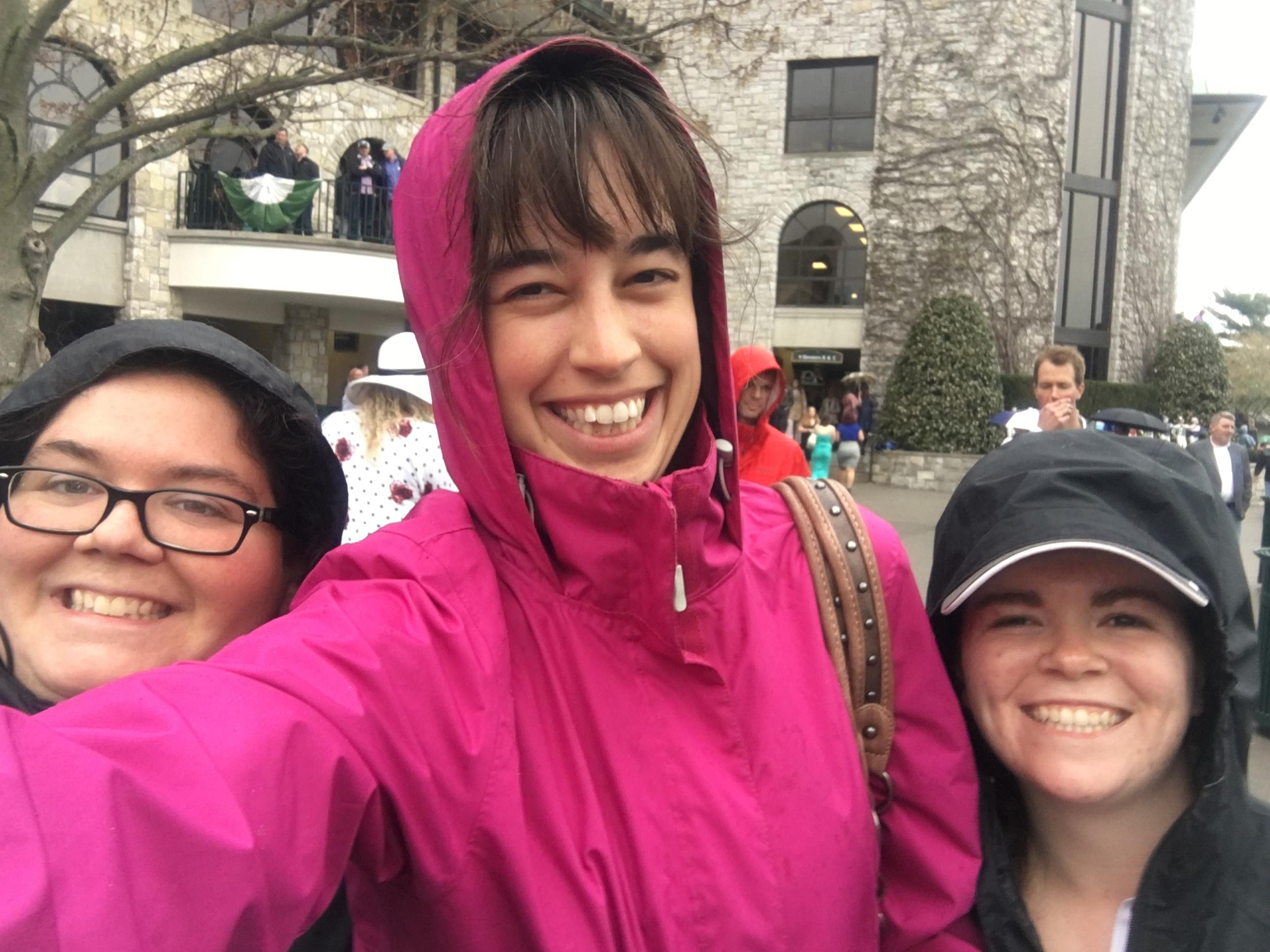
My Old Kentucky Weekend, Part III: Racing & Retirement
Kristen Kovatch’s 48 hours in the bluegrass concludes with another day of contrasts, spent at Keeneland with a visit to Old Friends retirement farm.
Friday had been a whirlwind of three different breeding farms representing three different aspects of the breeding industry: the historic and legacy-building Claiborne Farm, the multi-million dollar hobby at Jonabell Farm, and the intimate small-scale mare operation at Dala Farm. On Saturday, we would be devoting our time to another set of contrasts: racing and retirement.
Good Morning, Keeneland
“The track kitchen is the BEST place to get breakfast in Lexington!” our new friend Vicki had gushed the night prior while out to dinner in Midway. We had met up with Colleen of Dala Farm and Vicki, another area horsewoman, and had a lively conversation ranging from who had gotten kicked by what baby recently to everyone’s thoughts about Thoroughbred aftercare and what Kentucky’s horsemen could be doing better to ensure every horse coming off the track had a home.
So that was how my friend Eileen and I found ourselves hiking from the kitchen with hot coffee and breakfast through Keeneland’s open backside to the main track to watch horses work on Saturday morning. Indeed, Vicki was right, I thought to myself as I enjoyed a hearty breakfast as Thoroughbreds jogged by in the morning light.
I had expected that Eileen and I would be among the very few who came out to the track on a Saturday morning, but I was surprised by the number of families moving up and down the rail, children eagerly reaching over to pet the pony horses. Keeneland on a weekend morning was an attraction: a live commentator helped narrate what we were seeing on the track, including a full description of Kentucky Derby contender Good Magic when he came out to jog, fresh on the heels of his Blue Grass Stakes victory one week prior.
We then wandered up and down from the main track down to the training track and back again, greeted regularly by passing trainers and exercise riders moving up and down the hill with their horses. Whether this was simply the professional setting of the racetrack or everyone enjoying the morning sun on a gorgeous morning, I don’t know, but I loved contrast between this world of speed and galloping horses and the relaxed demeanor of everyone here, including the horses. Maybe it’s a Kentucky thing.
But we couldn’t linger and absorb the cheerful atmosphere of Keeneland for too long — we had another appointment at Old Friends.
A Living Hall of Champions: Old Friends
Old Friends should be on the travel bucket list of any racing fan, and truly there was a wide range of people in our tour group as we walked the grounds that windy Saturday morning: local residents, out-of-state fans, horse players and horsemen.
At the time that Old Friends was first conceived by founder Michael Blowen, the concept of a retirement farm for well-known Thoroughbreds was laughable — and indeed, many industry leaders laughed at Blowen openly, believing he would run out of money in months. No one anticipated the kind of support Old Friends would receive, both from fans and from the horsemen who might have laughed at him in the past.
The farm is now home to champions from days gone by, such as Silver Charm and Touch Gold, Sarava and War Emblem, Alphabet Soup, Game On Dude and many other famous names. There are also numerous horses with far shorter resumes but equally deserving of a comfortable retirement, supported by the tour revenue generated by fans who want to see their favorite legends.
We wandered up and down the paddock lanes with our knowledgeable tour guide Jane, who let us feed carrots to our favorites under supervision (and carrot shreds to those individuals with bad teeth — no detail goes unnoticed). Jane told us their stories, how they ended up here at Old Friends either through the grace of their connections seeking a retirement for their beloved horse or the power of networking to rescue horses from potentially bad situations.
Most of the tour is focused on the big names that most of us came to see, but as we stood by the paddock where the crotchety old War Emblem lived (guarded by a double fence to make sure he didn’t take a chunk out of anyone — according to Bob Baffert, War Emblem is the only horse that ever scared him) Jane pointed out the new expansions to Old Friends onto recently-purchased property, and the paddocks and fields further away from the main tour area where some of the lesser-known horses lived out their days in peace.
Old Friends is doing important work in the industry: allowing fans to come back and see the horses that took us all for a ride, while reminding us that aftercare is always a critical component every time a horse is brought into the world. These horses are still doing important work in retirement, though to them it’s just another day happily grazing and eating carrots from another group of adoring strangers.
Before we departed, I stood for another moment by the visitor’s center and looked over the entire farm, trying to grasp the scope of how far Michael Blowen’s dream had taken him and how many people had been touched by this place. It’s difficult to put into words how much this single farm has changed the conversation about Thoroughbred aftercare. I hope anyone visiting the Lexington area can visit this special place.
Back on Track
I realize that horse racing can be a controversial subject among horse lovers. Some of us love the thrill of the race, the ability to “go for a ride” emotionally without ever throwing a leg over a horse, the grace and beauty and power of a Thoroughbred. Others see racing as a cruel endeavor, forcing horses to exert themselves too young in the name of human entertainment; others look at the number of horses coming off the track and apparently dumped by their owners to ship for slaughter when they’re “used up” and their racing days are over.
Horse racing happens to be the most visible aspect of the horse industry, and therefore draws the most attention. There are problematic aspects of the racing industry, much as there are problematic aspects of various disciplines in the equestrian world. And just like any discipline, there are great owners and bad owners, great trainers and bad trainers, great horsemen and those who do not deserve the title.
My two days in Kentucky let me see a cross-section of the industry — a very small cross-section to be sure, but a wide scope of experiences from the top of the breeding industry to a more humble “every day” farm, the retirement haven at Old Friends and now back at the track for racing ranging from a Grade I stakes to an optional claimer for maidens. I stood at the rail with my friends in the rain and watched a day of racing with all its drama and pageantry, having a better understanding now of how much each horse carries the hopes and dreams of everyone who had been part of its life, and everyone still yet to come.
Based on what I saw in Kentucky, I believe that the Thoroughbred industry is leading the way in protecting its own. More and more tracks are coming on board with aftercare requirements while individual breeders are making sure a horse born on their property will be looked after for its entire life.
As we cheered our favorites home, my mind occasionally wandering back to my own off-track Thoroughbred at home enjoying some time off, I felt a greater appreciation for the entire industry, the various people who come together in a horse’s life from the breeder who carefully selected a mare and stallion to the individuals who raise and train each horse to the fans cheering alongside us who experience that thrill, all the way to the individuals waiting to give that horse a forever home. It’s a heck of a ride.












Leave a Comment